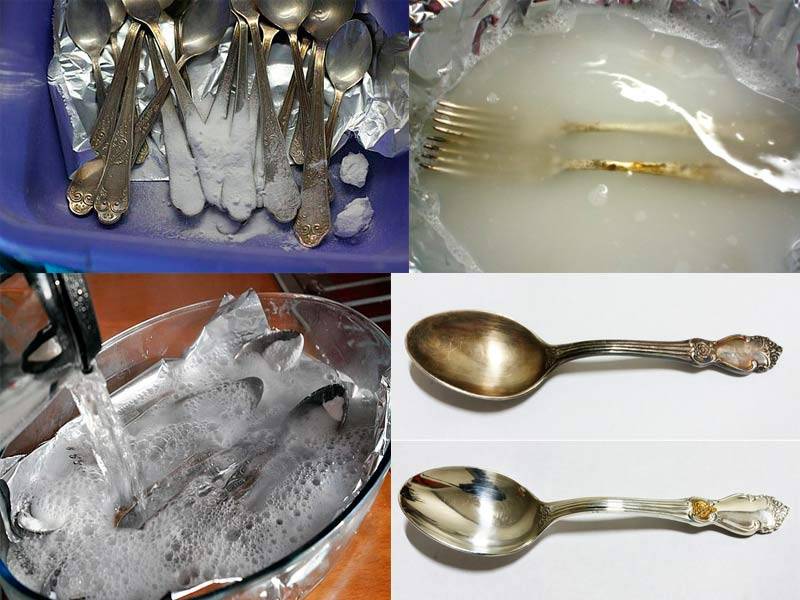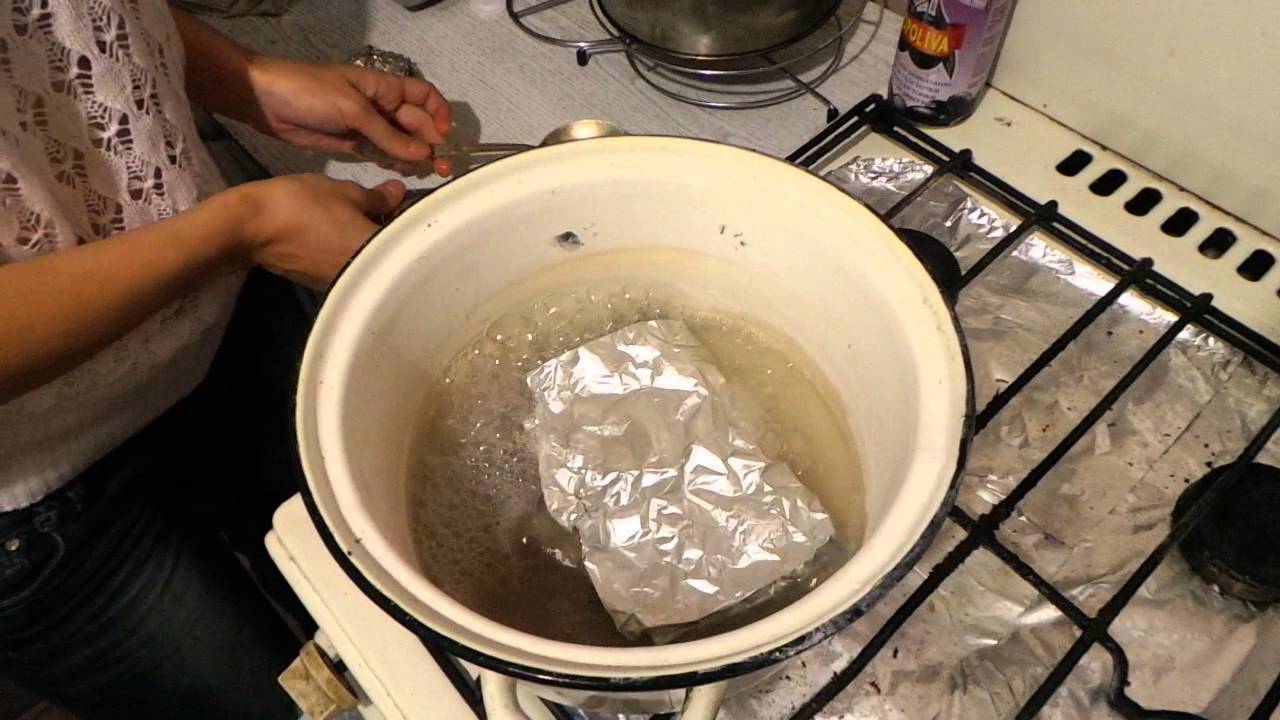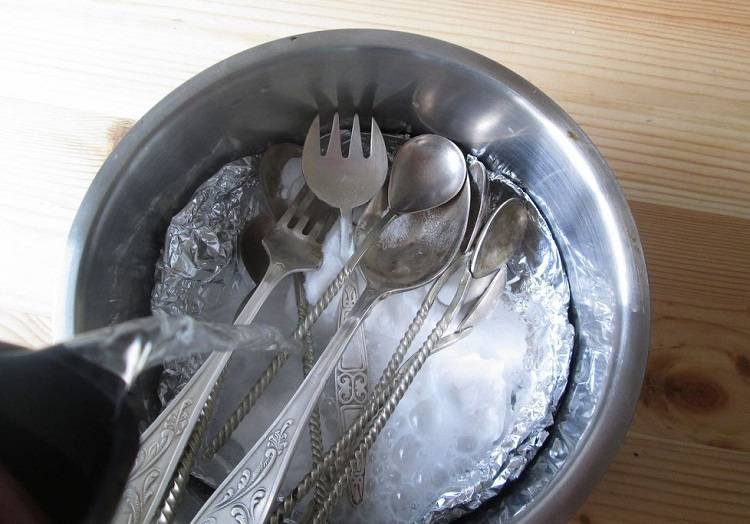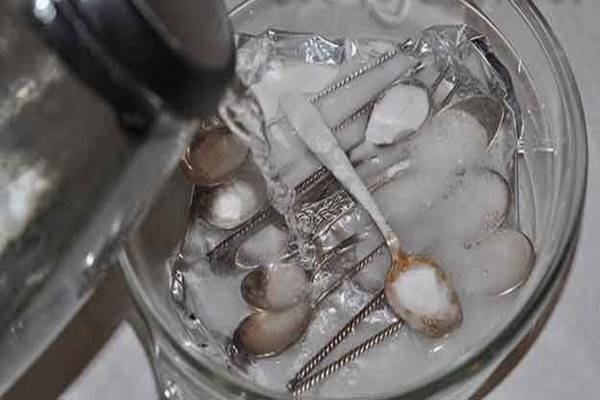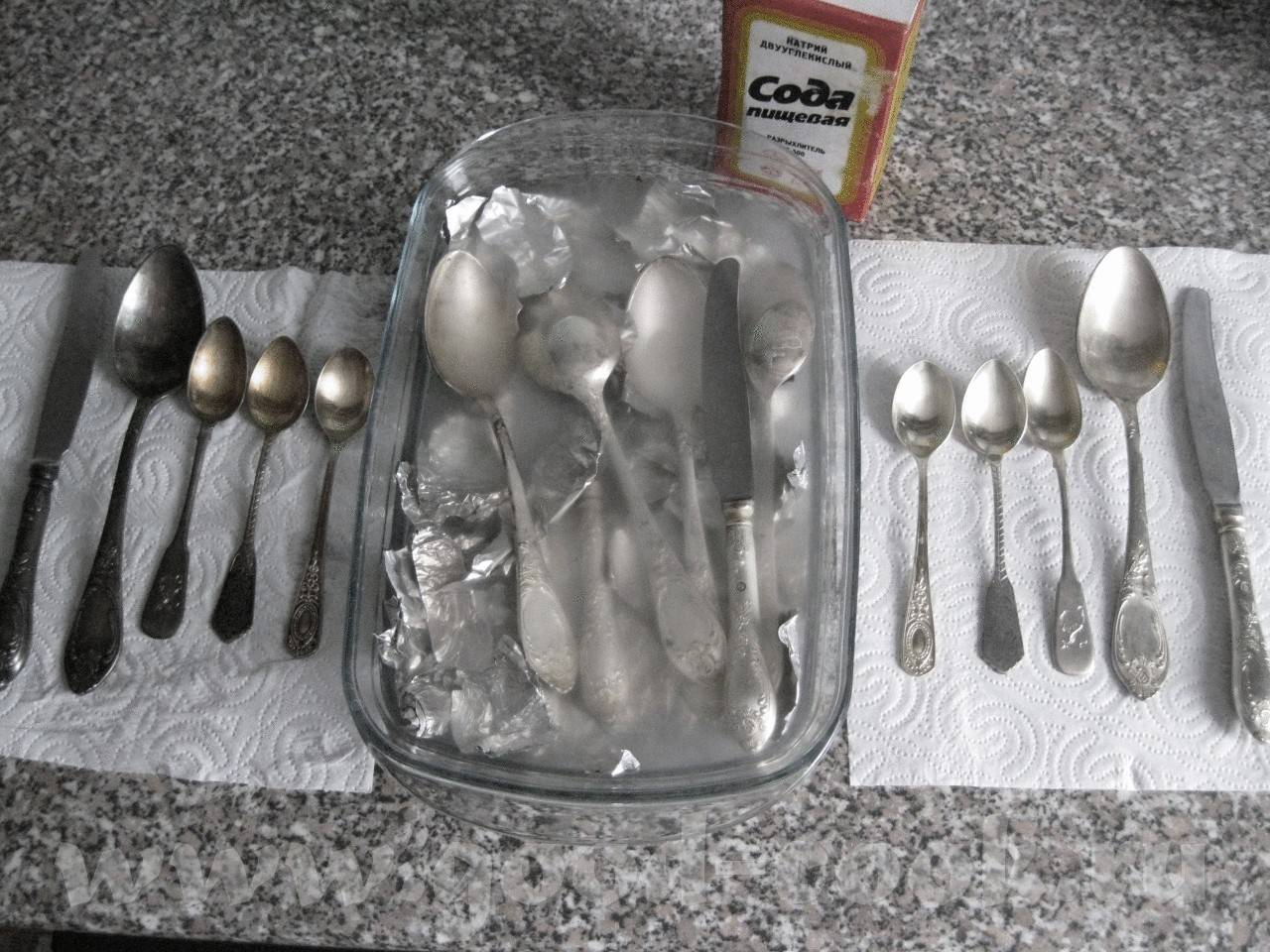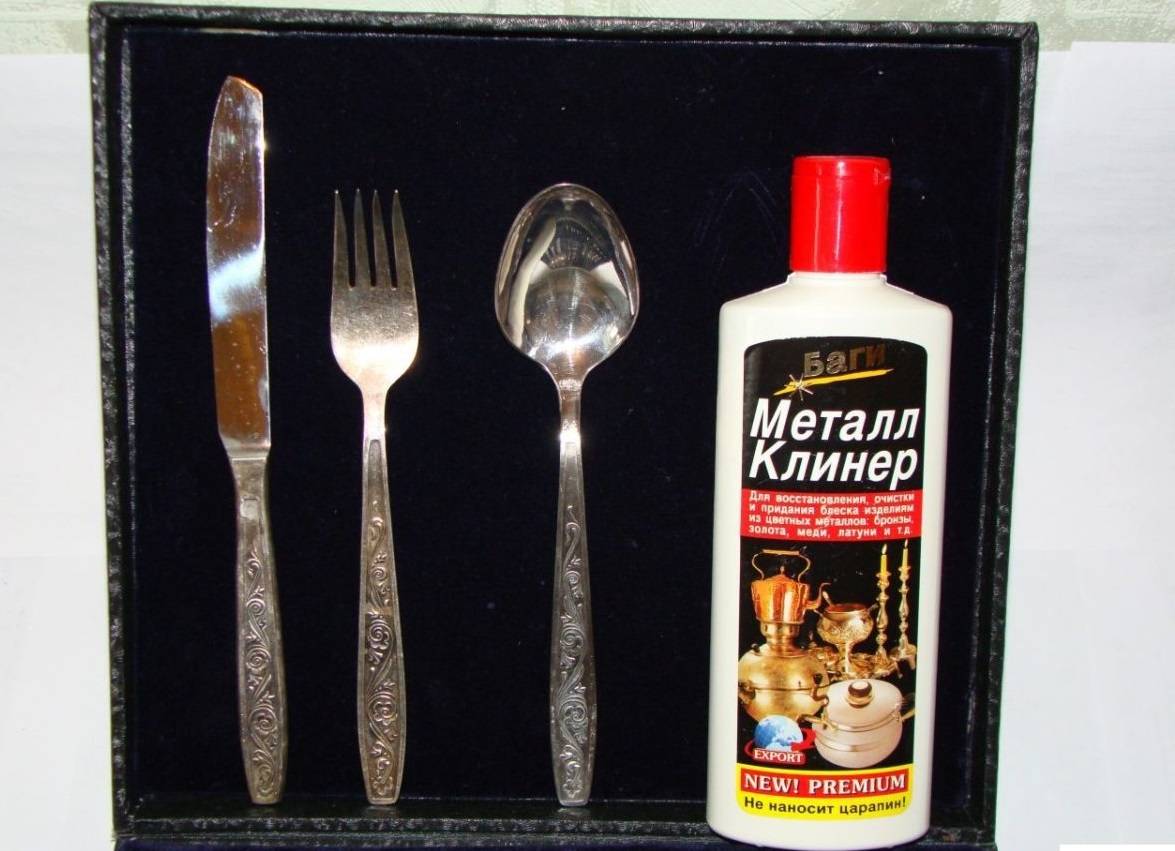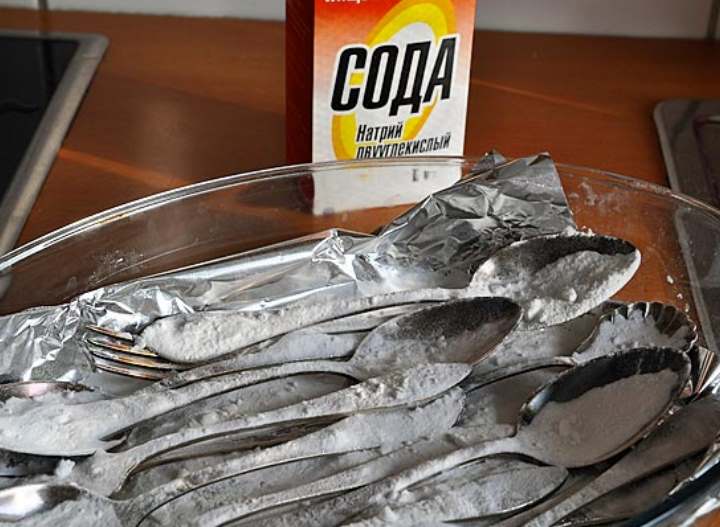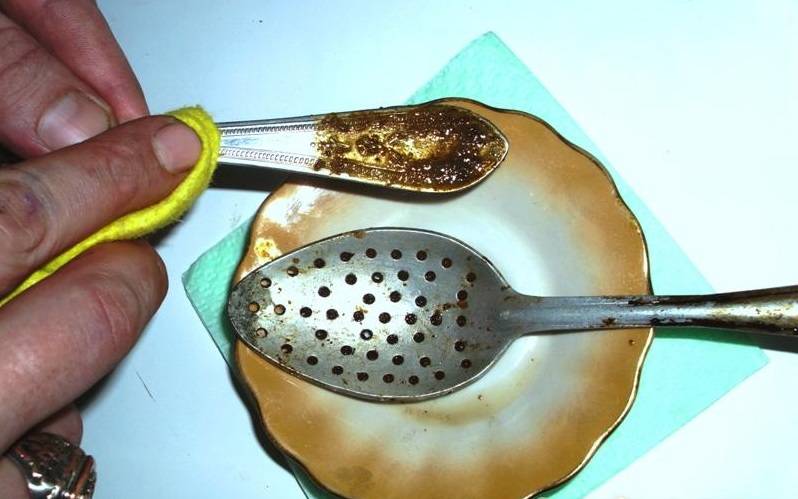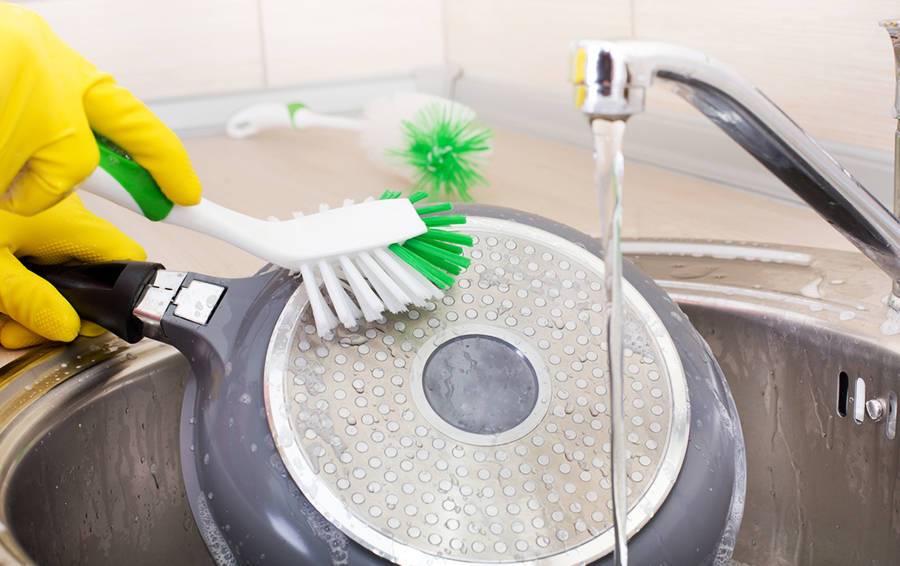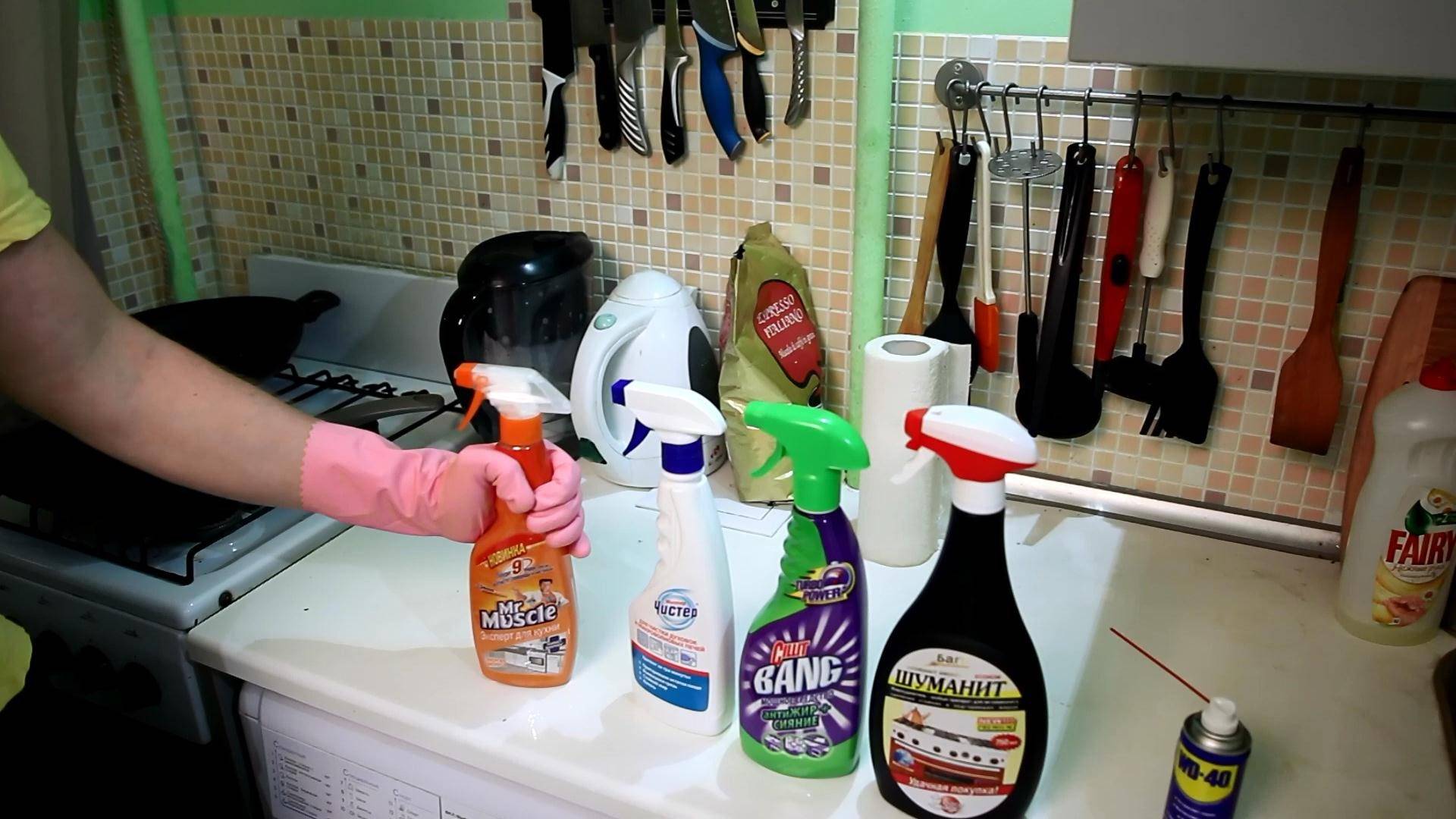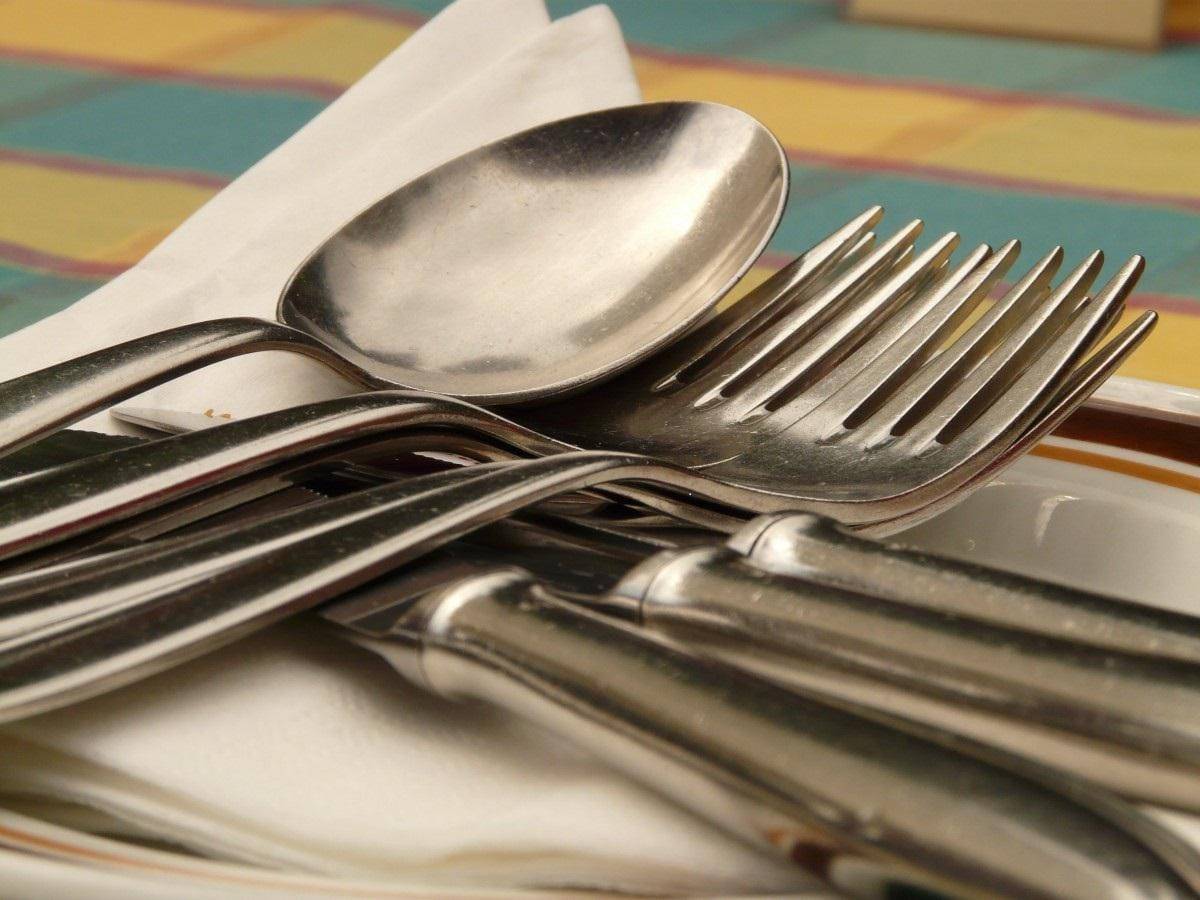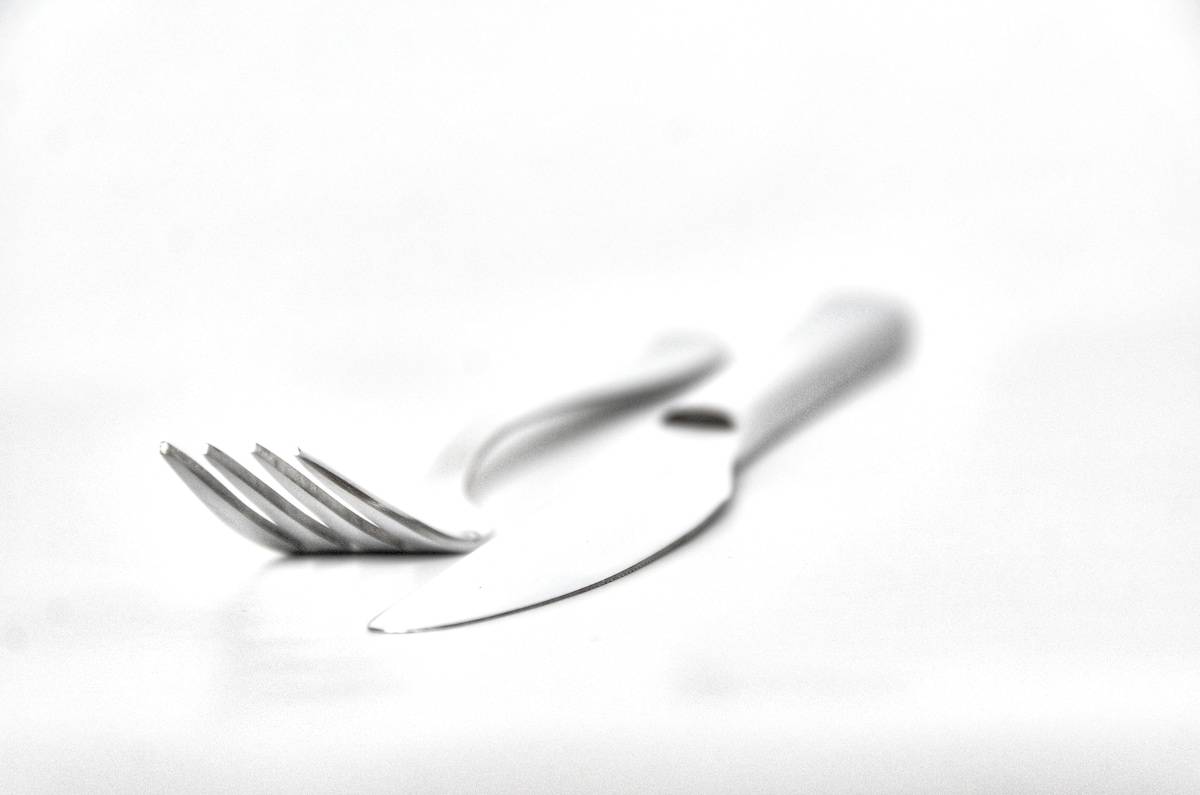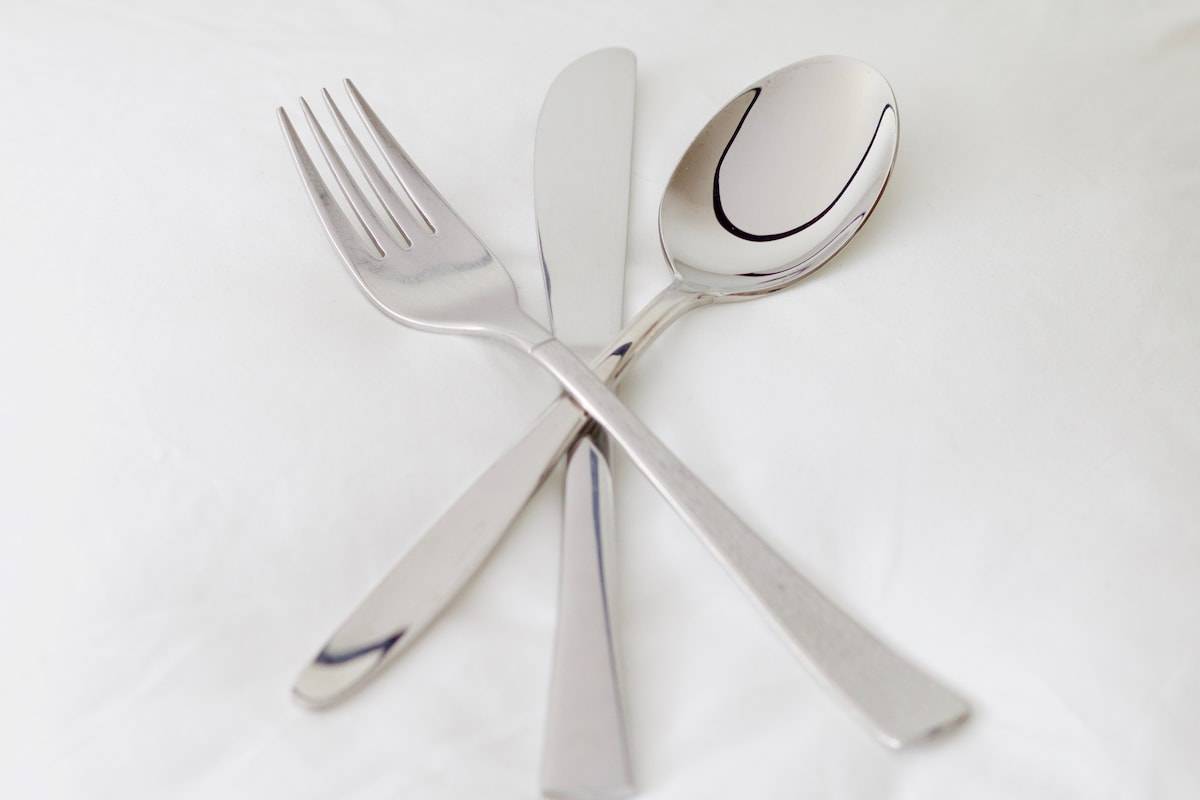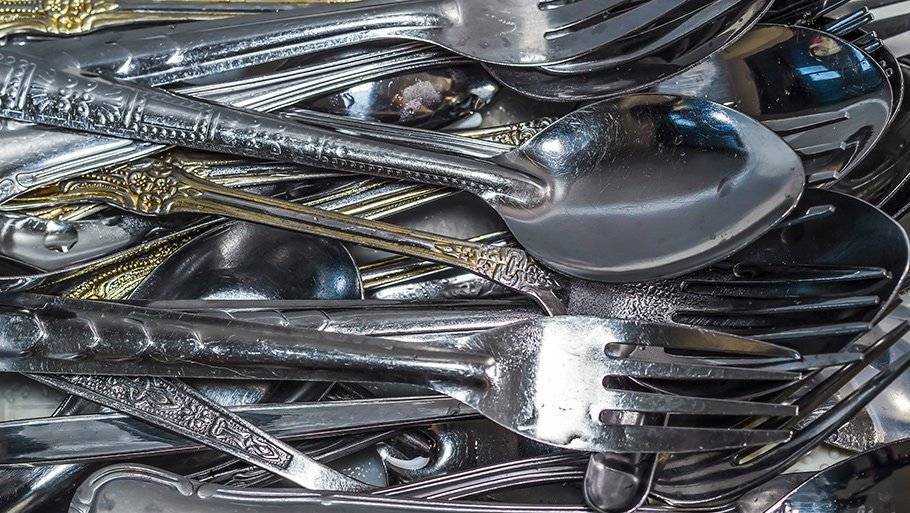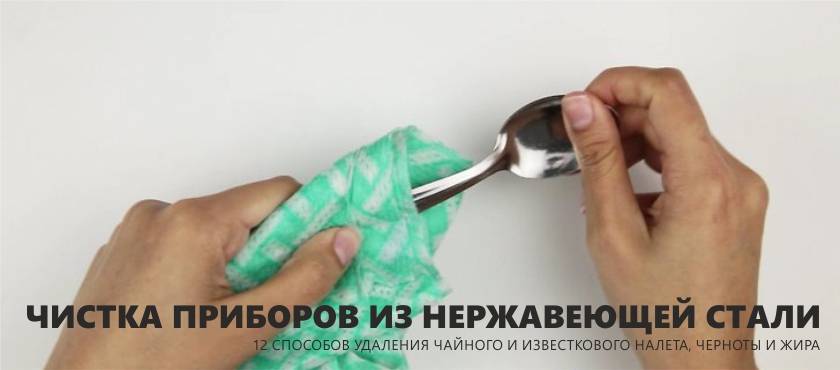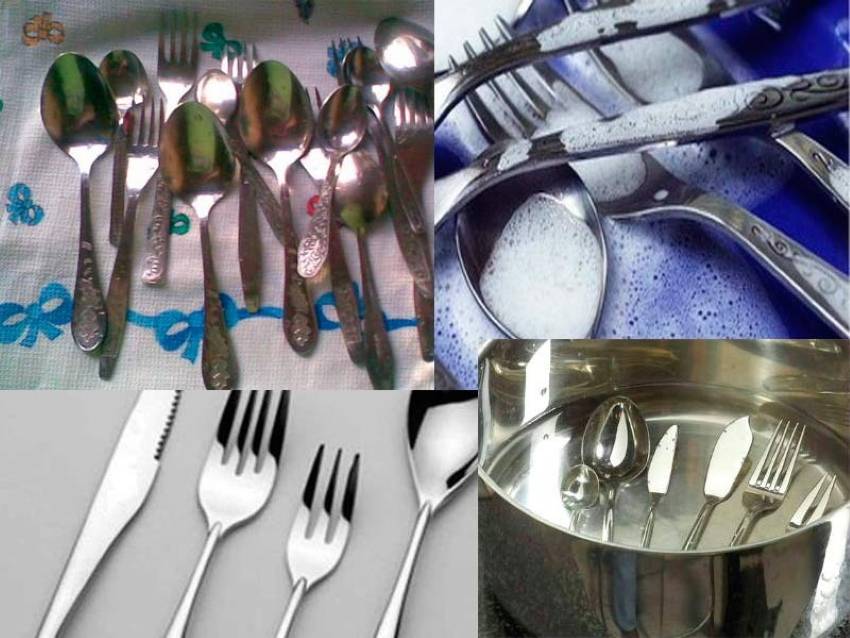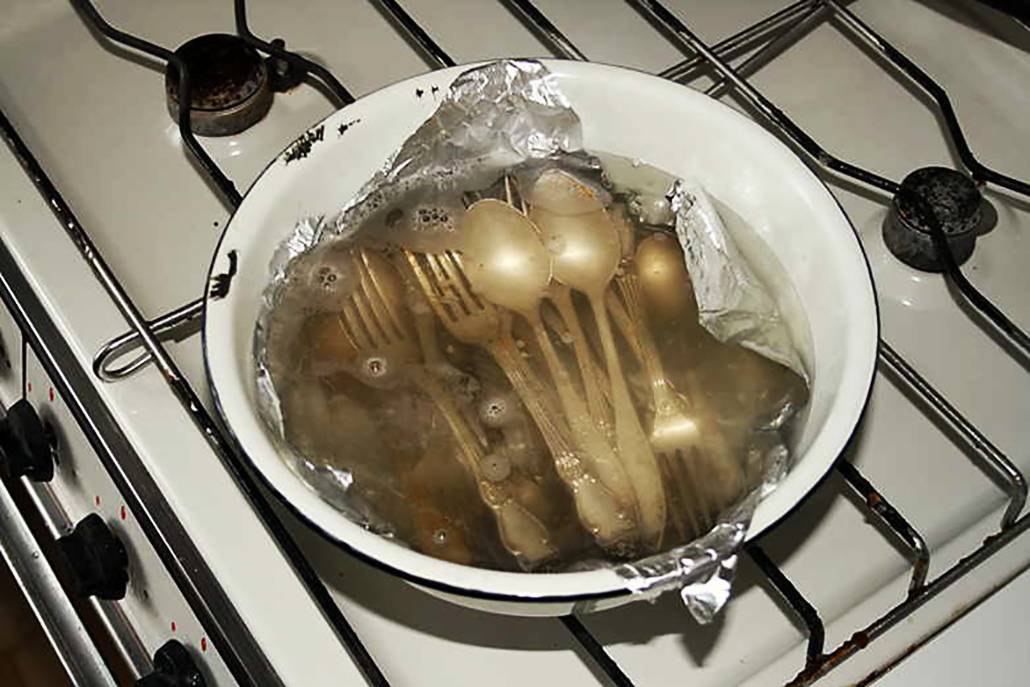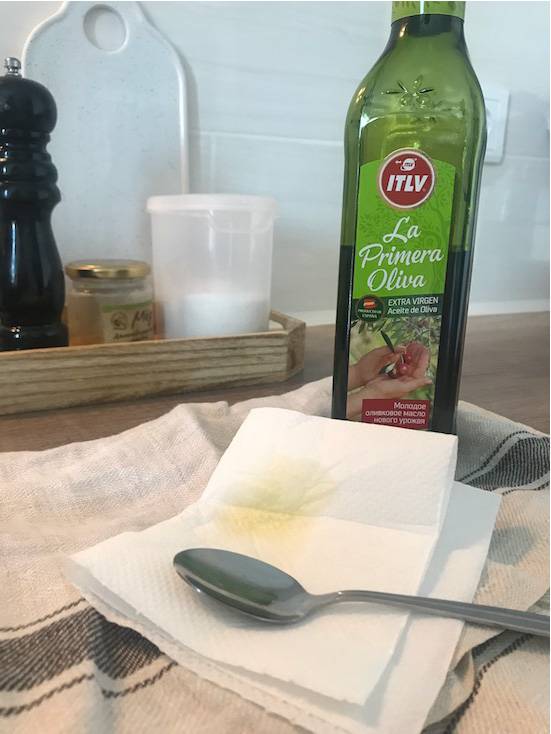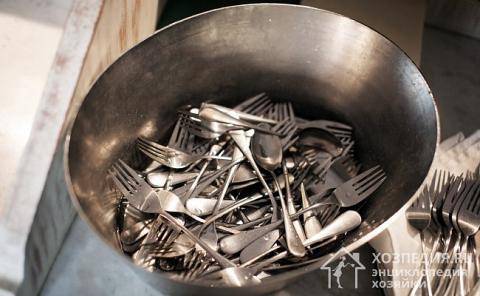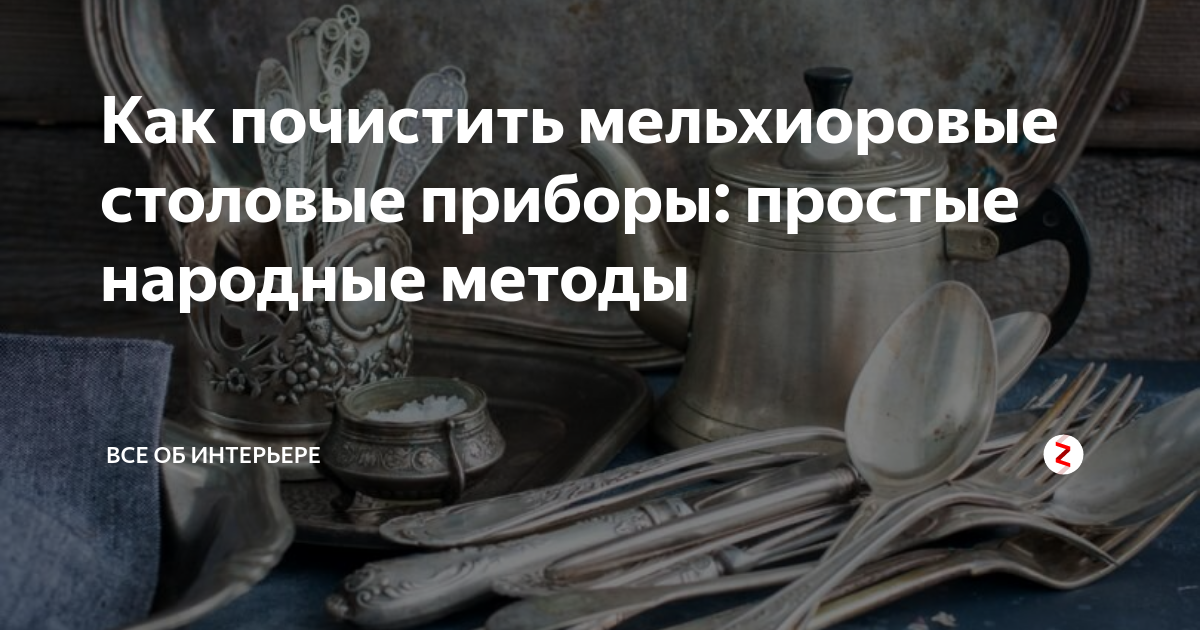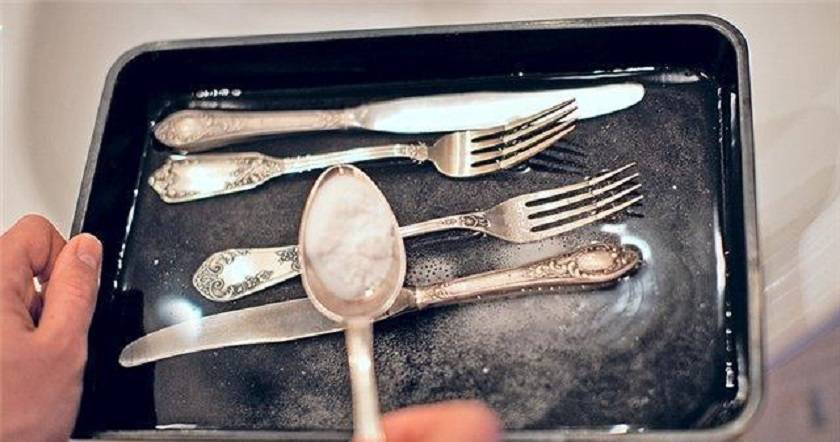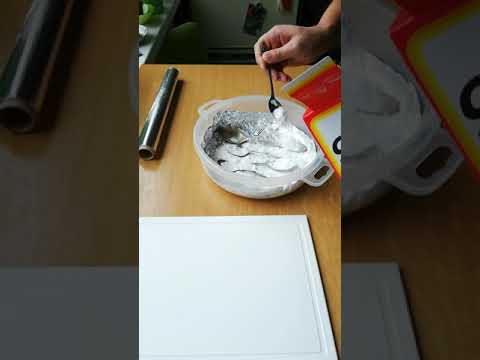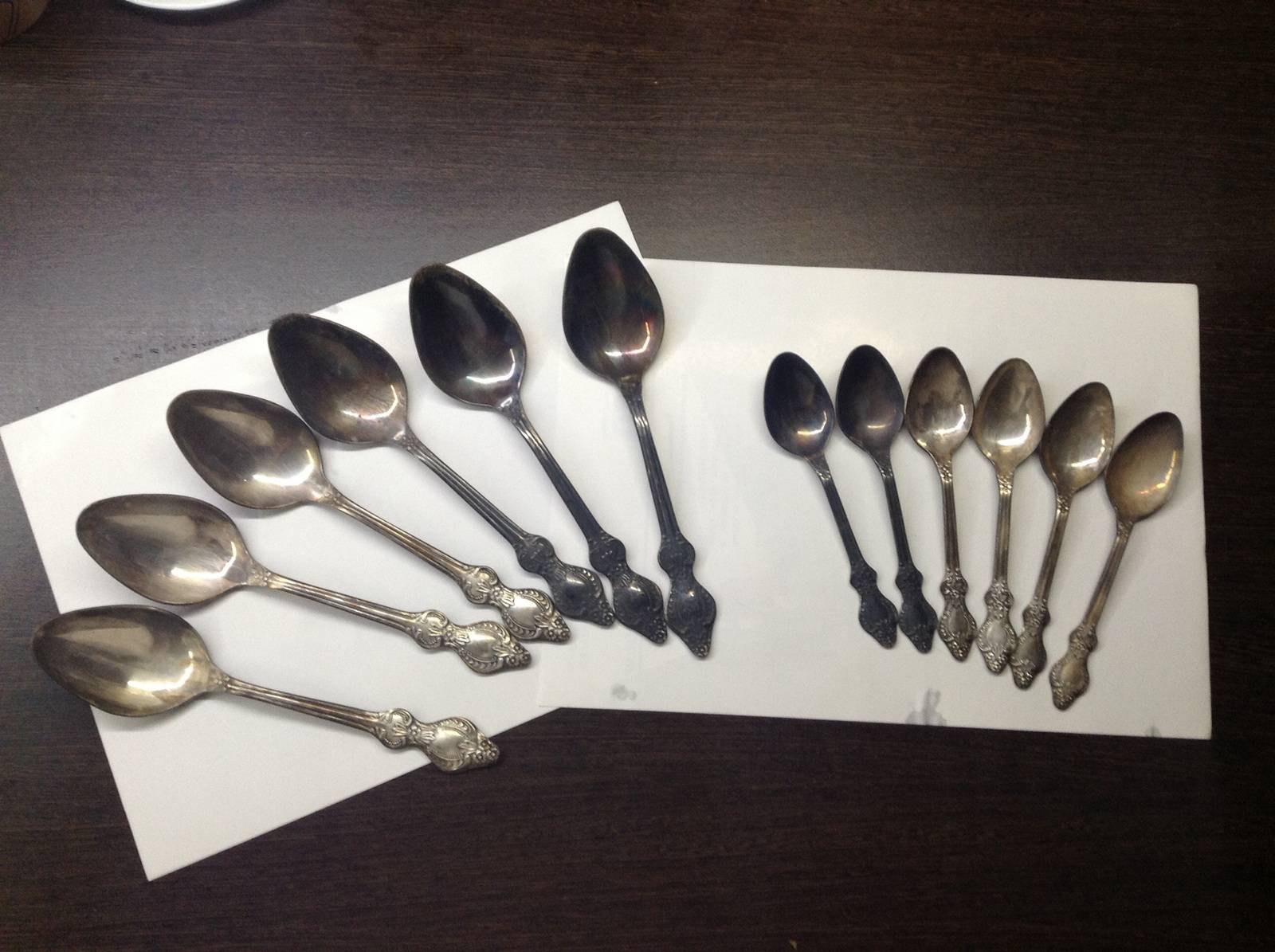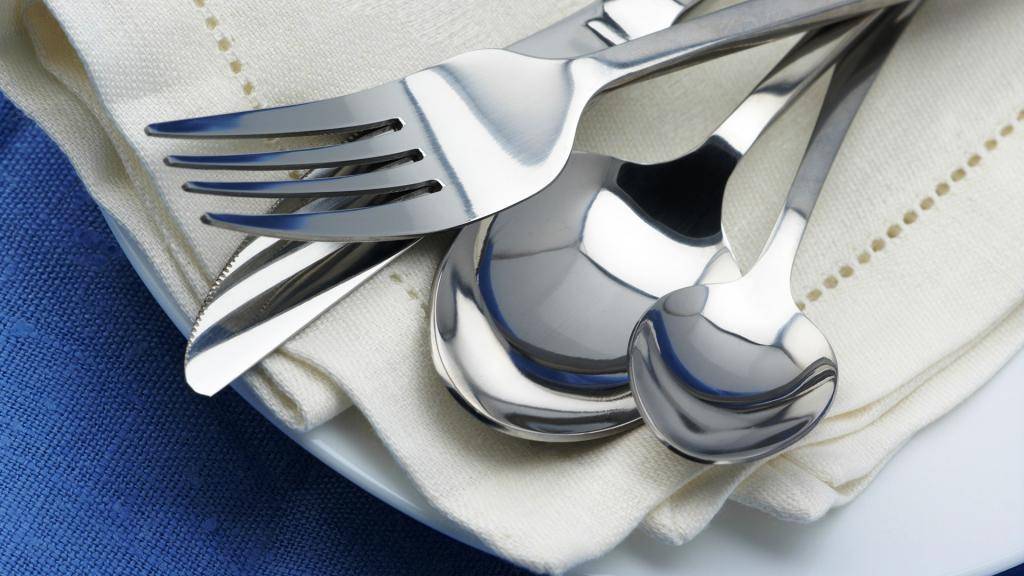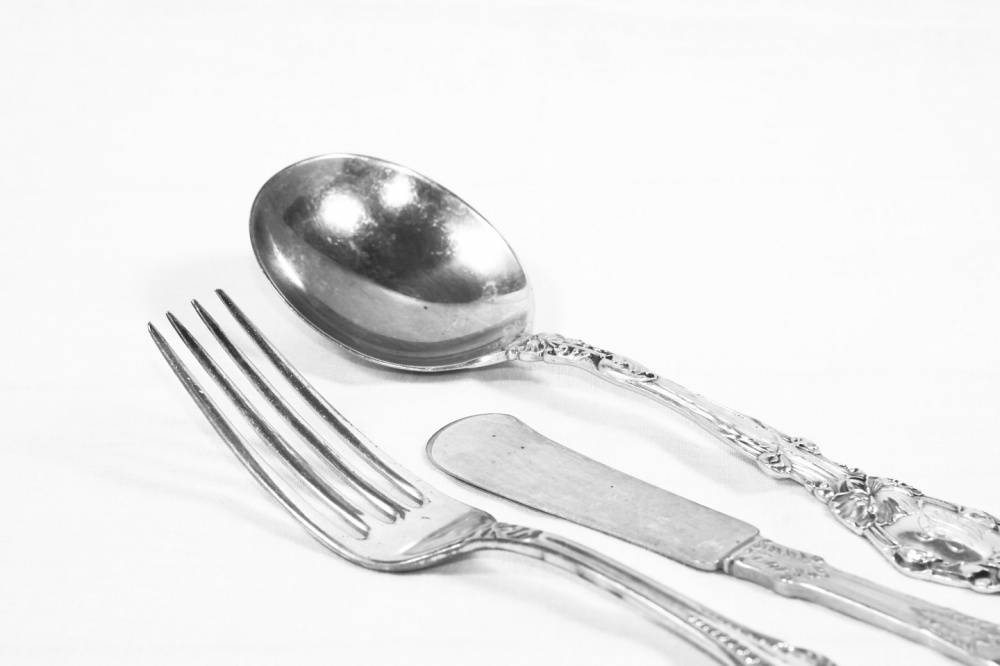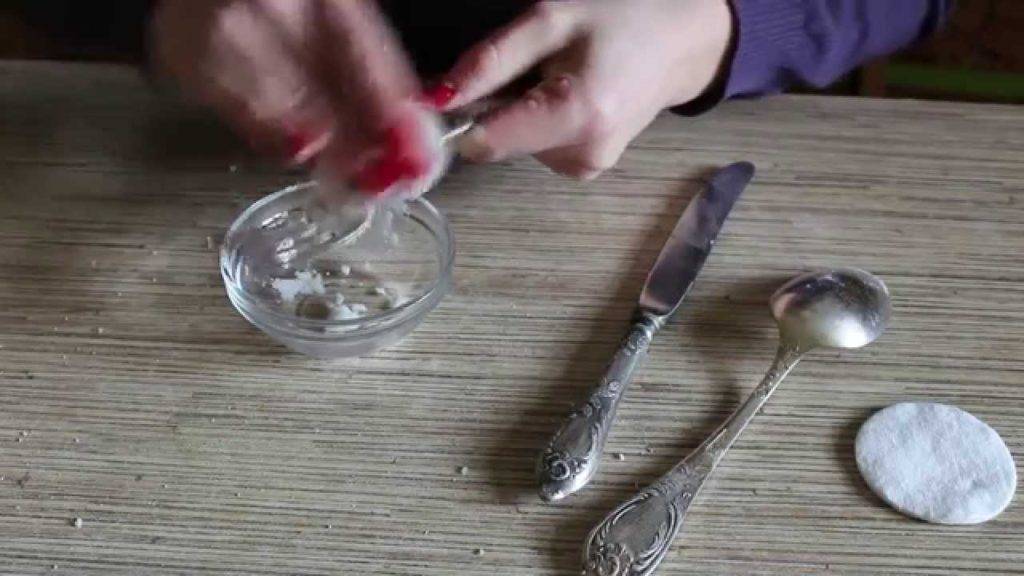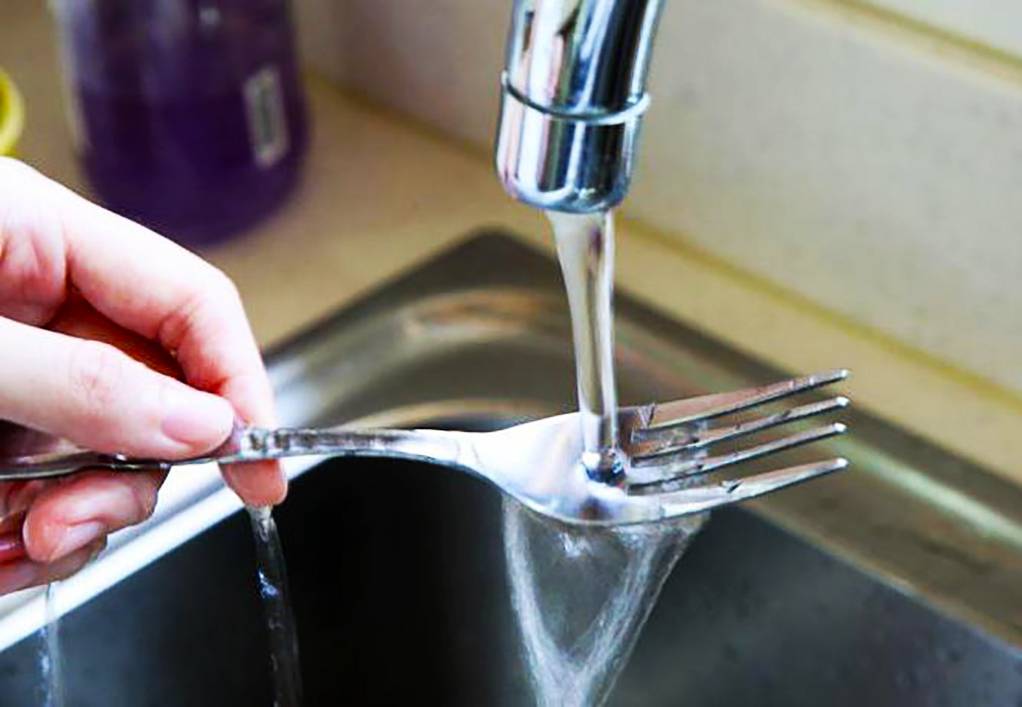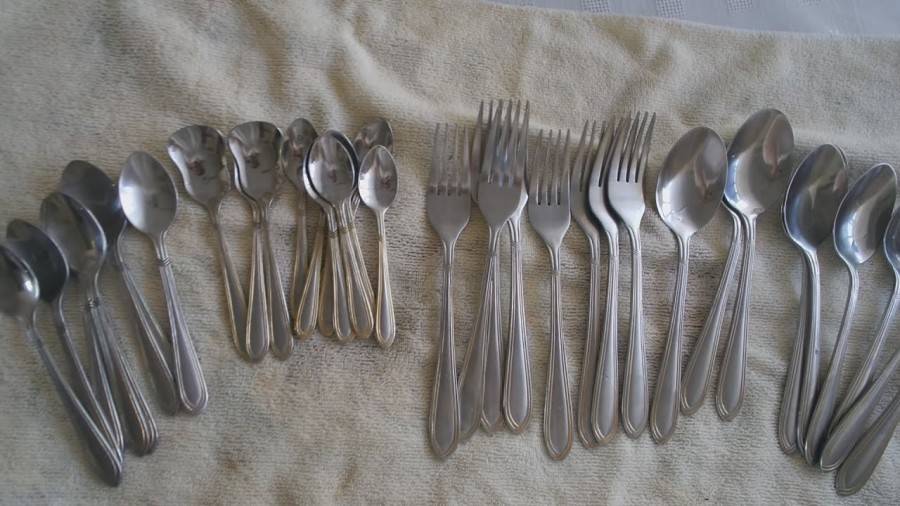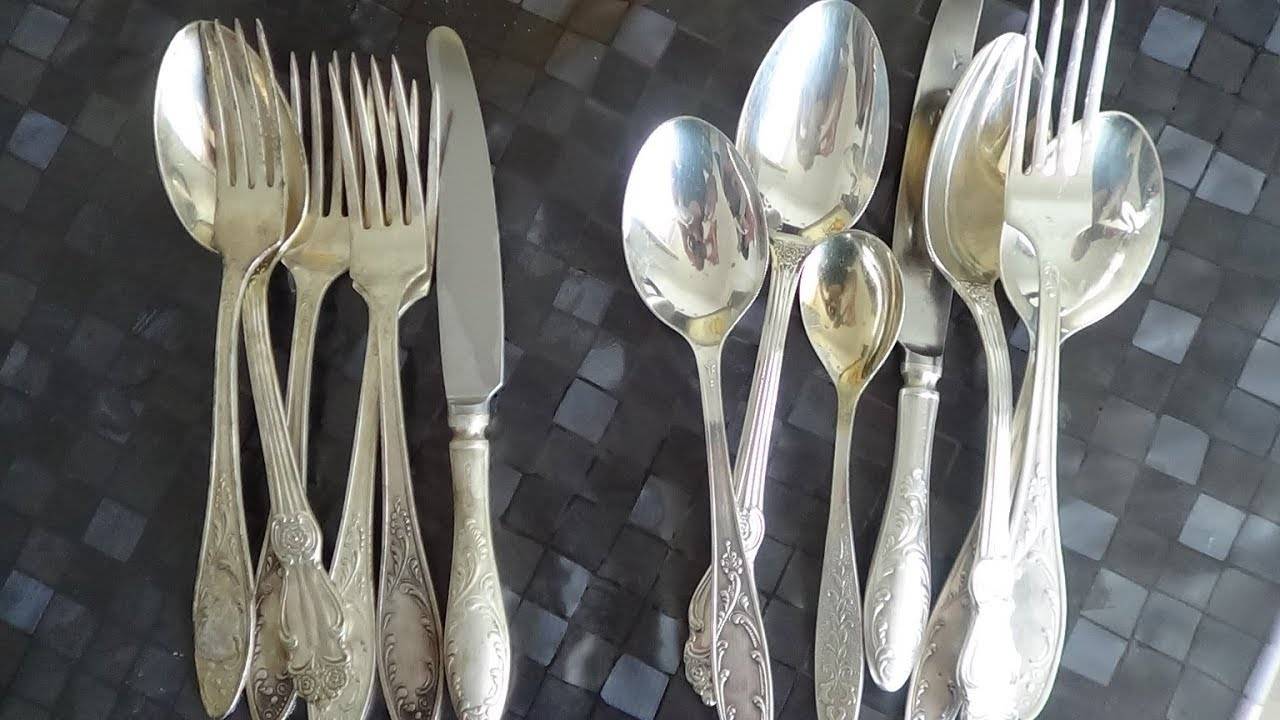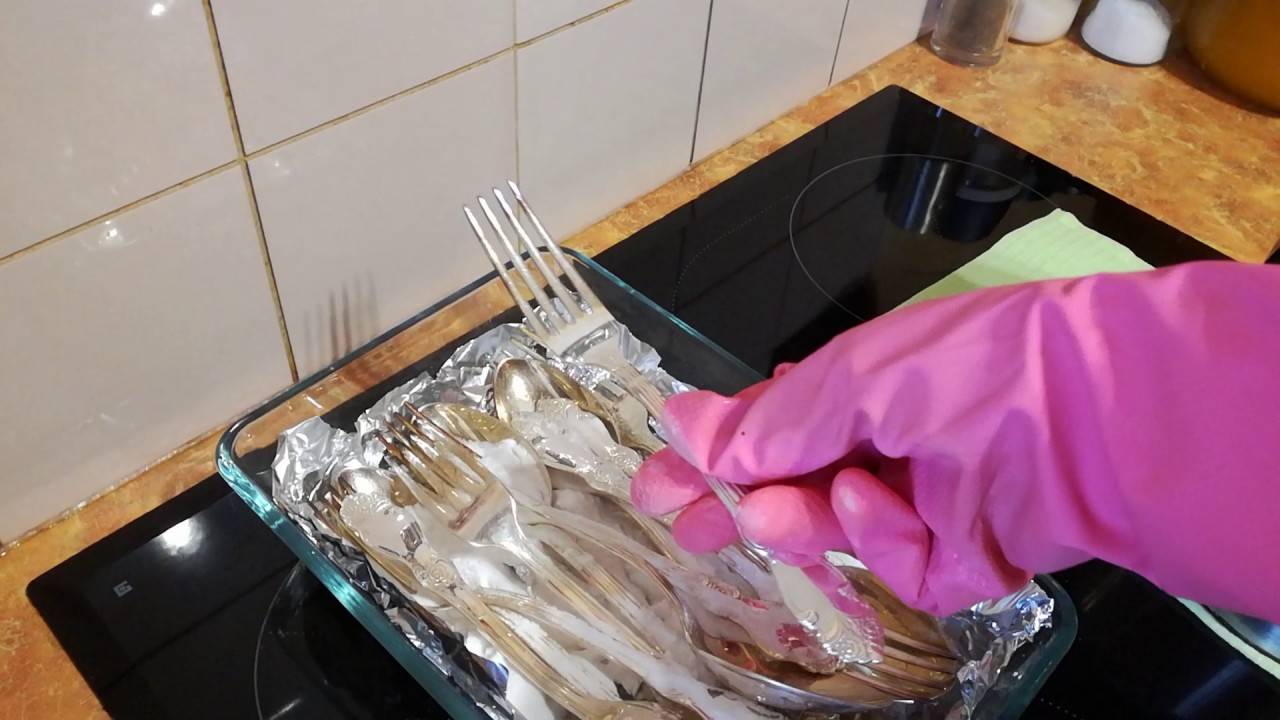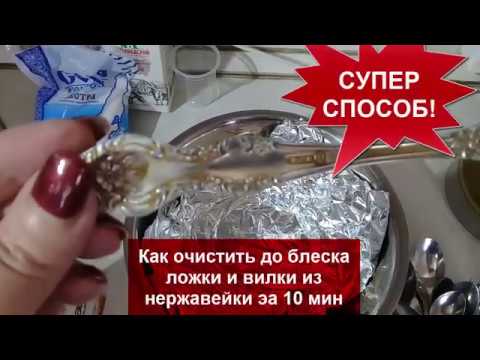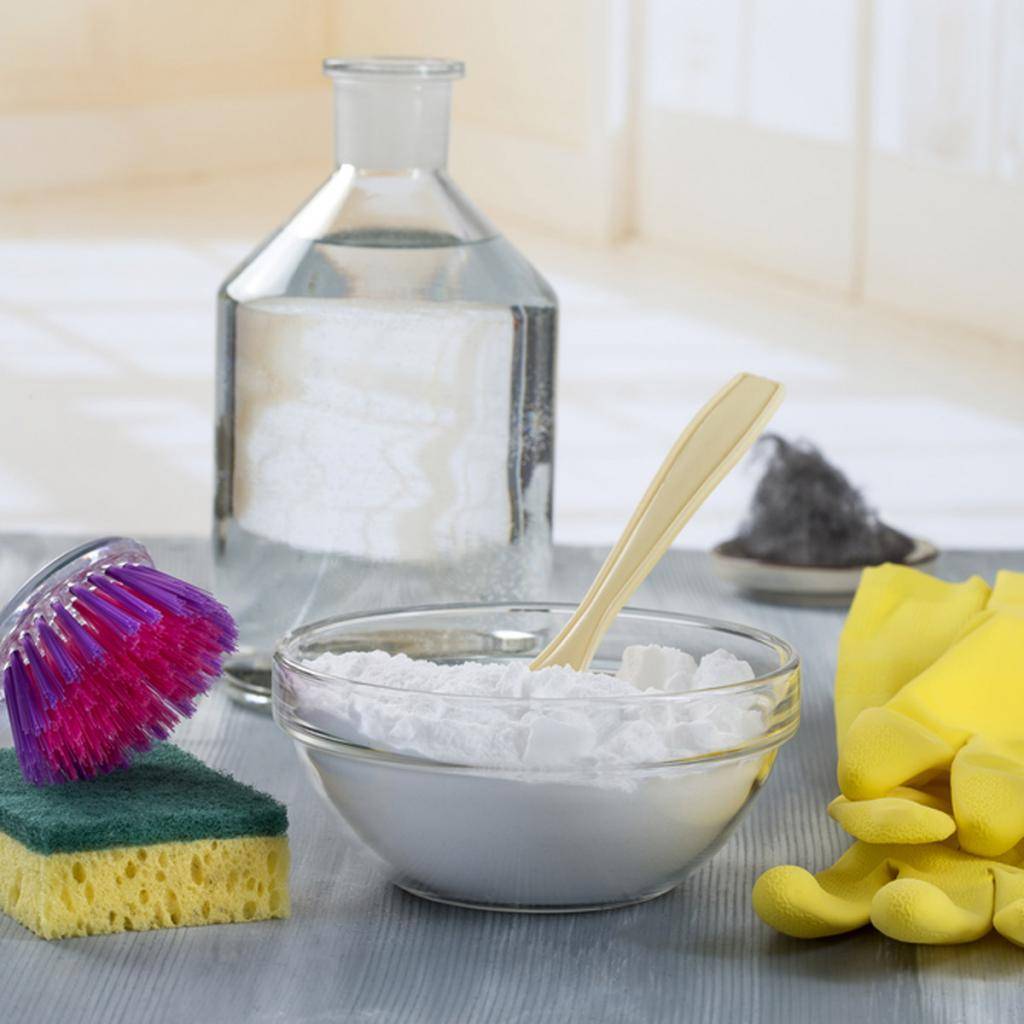Useful tips for the care of cupronickel cutlery
After purchase, the dishes must be cleaned in hot water with the addition of detergent or mustard powder.

Serving sets of dishes are cleaned on the eve of the celebration.
When stored in a case, cupronickel comes into contact with air, the metal tarnishes, loses its former attractiveness.
With constant use, cutlery is stored separately from other spoons, forks, knives. Best of all in a bag with a clip fastener, they put bags with silica gel in it so that there is no excess moisture.

It is recommended to regularly polish cutlery and utensils for special occasions and store them in special cases, separate from the sets for daily use.
In case of rare use, washed serving items:
- wipe dry;
- wrapped in paper towels;
- put it all in a bag, remove air from it as much as possible.
Note! If the dishes are stored in a case, wrap each item with cling film before placing the dishes in their places. Before serving, it will be enough to wipe the metal with a cloth dipped in vinegar
You don't need to rinse it, it will fade on its own.

To simplify the task for themselves, the owners of cupronickel appliances and utensils should make it a rule to take care of them, even with apparent impeccability, follow the recommendations for storage.
Several basic "DO NOT":
- leave the dishes damp, it will instantly darken;
- use chlorine-containing cleaners for cleaning, dark spots will remain, it is useless to wash them;
- use abrasive powders for cleaning, scratches will remain on the plastic metal;
- stir hot broths, vegetable soups, second courses during the cooking process, it will be difficult for the devices to return their shine, they will have to be polished with GOI paste for jewelry.
Important! In the dishwasher, the dishes are gently tidied up. It is better to wash items by hand using a new sponge that is free of grease.

Cupronickel is a good alternative to silver; at a budgetary cost, cupronickel products look noble.
With proper care, cutlery will retain its aesthetic appearance. Store the dishes in a dry place, away from water. It is better to adapt a cardboard box or a resealable container for this.
How to clean silver cutlery

For cleaning silver cutlery, various products are used, including those that are applicable to stainless steel appliances. Only technology is changing.
Ammonia
If the devices need to be cleaned in a short time, for example, before the arrival of guests, they should be wiped with a cloth soaked in ammonia. Then rinse and dry. But the standard cleaning scheme is as follows:
- In a container, mix water and ammonia in a ratio of 10: 1 (10 parts of water to 1 part of ammonia).
- Put the devices in the solution and leave for several hours.
- Rinse with water and dry with a towel.
Lemon acid
After cleaning with citric acid, the devices will restore their former gloss.
- Mix 1 liter of warm water with citric acid (1 sachet), put the soiled items in there and wait about 15 minutes.
- Rinse under running water, dry with a clean towel.
Carbonated drink and soda
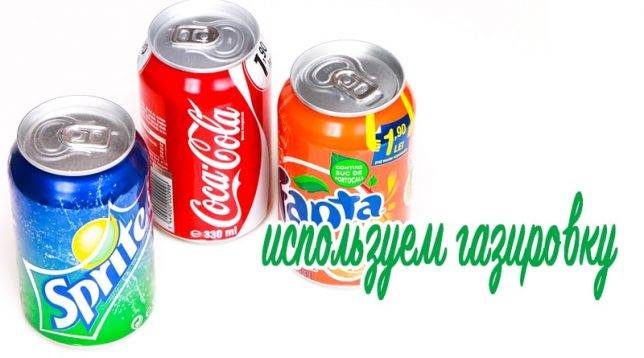
The method will help remove plaque from silver appliances.
- In 0.4 liters. Coca-Cola or other carbonated drink add 1 tsp. soda.
- Put spoons and forks in the resulting liquid, and pour a small amount of boiling water there.
- Wait about 15 minutes.
- Take out devices and rinse with water.
Baking soda
Soda cleaning is applied to appliances with a smooth surface.If there is a pattern on the products, then the soda is unlikely to be able to penetrate into the depth of the image.
- Put some baking soda on a sponge.
- Clean the surface.
Extra salt
Extra-class salt removes grease, plaque and grime from silver.
- Dissolve 1 tbsp in 1 liter of hot water. l. salt.
- Apply a little salt to a sponge and use it to clean the items.
- Put peeled spoons and forks into the solution and leave for several hours.
- Rinse off the salt well and dry the products.
Chalk and ammonia
This method is suitable for cleaning not only products with a smooth surface, but also for products with a pattern. Chalk and ammonia will not damage the surface.
- Grind the chalk in a container to a powdery state.
- Pour ammonia into the powder. You should get a gruel.
- Clean contaminated surfaces with the mixture using a soft cloth.
- Rinse and dry the devices.
Specialized household chemicals
Hardware stores sell special cleaning products for silver spoons and forks. Before using them, you must read the instructions and adhere to the manufacturer's recommendations.
Video Tips
Table Silver: How to clean properly
General recommendations for cleaning and storage
Proper care and competent storage organization will help to preserve the shine and original appearance of stainless steel cutlery.
To do this, follow these simple guidelines:
- Wash spoons, knives, and forks immediately after eating. It is extremely difficult to wash off dried food particles, and they gradually accumulate, spoiling the aesthetic appearance of the product. In addition, food debris is a favorable breeding ground for pathogenic bacteria.
- Soaking can help clean up dried food. Dissolve a small amount of detergent in warm water and leave the utensils in it for a few minutes. Remove softened dirt with a soft sponge.
- Do not use metal brushes or other abrasive objects for cleaning - they will scratch.
- If you want to clean your spoons and forks to make them shiny, rinse them in water with the addition of ammonia.
- After washing, be sure to wipe all appliances dry to avoid plaque and stains.
- During storage, all items should be in a special box, where it is clean and free of moisture.
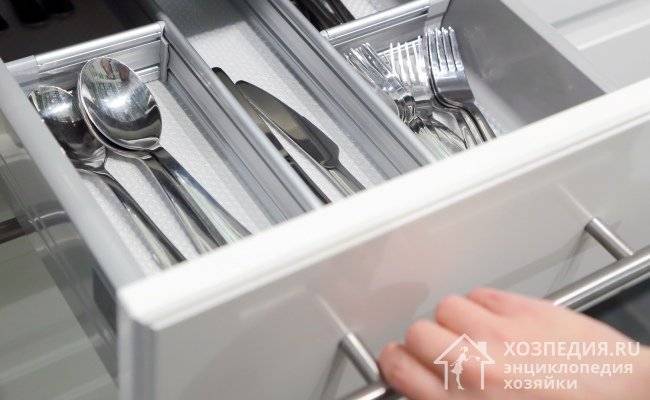 To preserve the original appearance of stainless steel products, provide them with proper care and organize competent storage
To preserve the original appearance of stainless steel products, provide them with proper care and organize competent storage
We clean the silverware
Now is the time to figure out what can be used to clean silver cutlery. Many of the products we have used to clean stainless steel products will work for them as well. However, the cleaning technology has some differences.
|
Cleaner |
How to apply correctly? |
|
Ammonia |
In order to clean silver cutlery with ammonia, you must do the following:
If you need to clean your silver cutlery a little faster, for example, for the arrival of guests, you can dampen a cloth with ammonia and wipe each piece. Then rinse with clean water, dry thoroughly - and you can serve the table. |
|
Lemon acid |
Darkened silverware can be effectively cleaned with citric acid. It is necessary to dissolve a package of acid in a liter of warm water and immerse silver cutlery in the solution for 15 minutes. Then wash off the acid with plenty of water and thoroughly remove any remaining moisture. |
|
Baking soda |
Non-patterned silver cutlery can be cleaned with baking soda. Apply a small amount of soda ash to the sponge and clean the appliances until the stains disappear. Why can't you use baking soda for silver patterns, you ask? You can use it, except that soda will not be able to clean the depressions in the pattern from darkening. |
|
Toothpaste |
The toothpaste will gently clean not only stainless steel cutlery, but also silver ones. It is enough to apply a small amount of the paste on a soft toothbrush and brush until you see a glimpse of mirror reflection again. |
|
Extra grade salt |
Fine edible salt will effectively cleanse silver cutlery at home from brown deposits and grease. Salt will cope even with old dirt. In order to clean the silverware correctly, you need to do the following manipulations:
|
|
Stationery eraser |
A stationery eraser will be able to clean silver cutlery at home. It is necessary to wipe off black plaque only with the light side of the eraser, since it is softer. You will see that after a few minutes of cleaning from the black plaque, there will be no trace left! |
|
Tooth powder + ammonia + soda |
This tool will perfectly remove dirt that even your grandmother could not wash. To quickly and efficiently clean your silverware, you need to do the following:
Tooth powder is able to cleanse even the oldest "blackness", but do not overuse this tool, as the powder can provoke the appearance of microcracks in the silver. If you are afraid that this product contains many abrasive components, you can exclude soda ash. |
|
Chalk + ammonia |
It is a very mild cleanser that can be used to clean your silverware gently and gently. You need to prepare a gruel from chalk and ammonia, so that in consistency it resembles liquid kefir. Apply the resulting gruel to forks and spoons with a soft cloth and rub well. Finally, rinse the silver thoroughly with plenty of water and remove excess moisture. |
These products will help you to effectively clean silver cutlery at home, most importantly, they will do it as carefully and accurately as possible. However, if you have spoons or knives with blackened or filigree silver on the handle, do not try to cleanse it of this "blackness", since patina (that is what it is called) gives table silver a noble sophistication and unique charm
General recommendations for cleaning and storage at home
Regardless of what the objects are made of, after eating, they must be immediately placed in heated water, it is rather difficult to remove dried food residues. Do not wash cutlery with hard metal sponges, as scratches appear on the surface.
To make spoons or knives made of cupronickel, stainless steel shine, it is advised to pour ammonia into the water.
The devices must not be stored wet, otherwise they will become coated. It is better to wash and wipe metal products with a soft cloth or foam sponge.
Cupronickel cleaning
Considering tips on how to clean cupronickel cutlery, it is necessary to take into account the features of this material. He's moody enough
With high humidity or improper storage, this silver-zinc-copper alloy quickly darkens
It is important not to damage the surface during the cleaning process.
One of the most popular remedies in this case is soda. It can only be used as a solution. In a pan covered with foil, you need to pour 2 liters of water. 10 tbsp is poured into it. l. soda. When the water heats up, cutlery is poured into it. Boil the dishes for 25 minutes. After that, the fire is turned off.
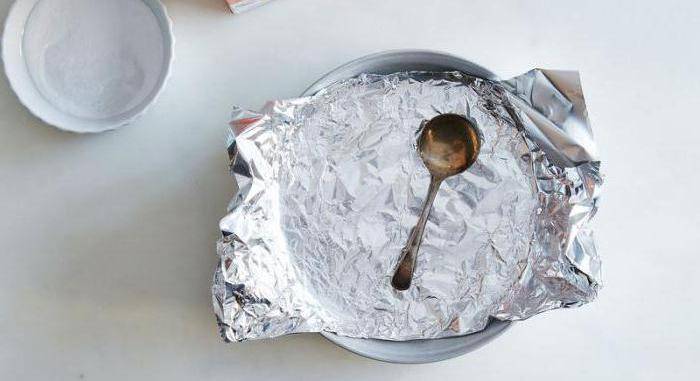
The water in the pot should cool naturally. After that, all cutlery is taken out and dried thoroughly with a towel.
It is important to pay attention to the way in which the cutlery is stored after cleaning. They must be kept in a dry, protected container.
How to clean spoons and forks with home remedies
You can return shine and cleanliness to stainless steel products at home. The tools at hand, which are certainly in the kitchen or in the medicine cabinet of every housewife, can help in this.
Boiling
The simplest, most affordable and effective way is boiling:
- Pour 2 liters of water into a saucepan, add 2 tbsp. l. baking soda and rock salt.
- Preheat the mixture and place the cutlery to be cleaned in it.
- Cook the products for 30 minutes.
- Remove spoons and forks, rinse in clean water and dry with a soft cloth.
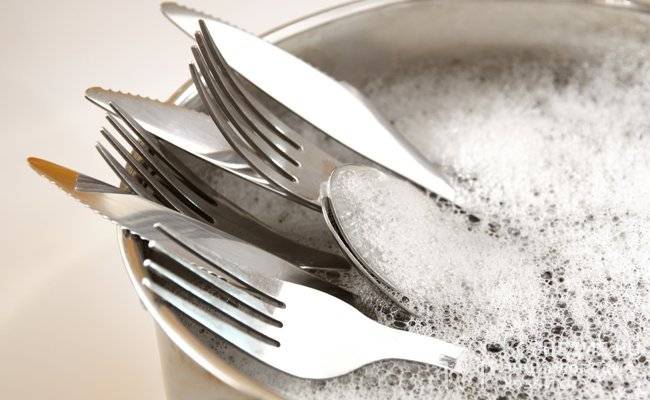 Boiling is the easiest and most effective way to clean stainless steel items and restore their original shine.
Boiling is the easiest and most effective way to clean stainless steel items and restore their original shine.
Soda + citric acid
An alternative method is acceptable:
- Pour 1 tbsp into a bowl. l. baking soda and 2 tbsp. l. citric acid.
- Pour hot water over the dry mixture.
- Place the appliances in the solution and let them sit for 10-15 minutes. A little vinegar can be added to clean heavily soiled items.
- Rinse the washed spoons and forks thoroughly and wipe dry.
Other home remedies (table)
Simple home remedies can help you quickly clean your stainless steel spoons and forks. For ease of perception, all cleaning methods are collected in a table:
| Means | Mode of application | the effect |
| Soda |
Combine the powder with water until a slurry is formed. Rub the appliances well using a sponge and then rinse well |
Removes yellow and greasy deposits, dried food debris and other contaminants |
| Vinegar | Soak a soft cloth in vinegar and thoroughly wipe all products |
Returns shine and purity. Removes hard water deposits. Not suitable for bleaching and de-greasing |
| Coffee grounds | Apply a small amount to a sponge and treat the appliances. Then rinse everything with clean water and pat dry with a towel | Well cleans products from dirt, including dried food residues |
| Potato | Peel the tuber and rub all products with it | Returns shine and clarity |
| Potato water | Boil stainless steel products in water where potatoes were cooked | Helps deal with dirt and effectively cleans appliances |
| Onion juice | Rub the cutlery with a half cut onion, then rinse well in clean water and dry with a soft cloth | Removes tarnishing, gives spoons and forks a radiant shine |
Toothpaste / powder
You can also clean the stainless steel with tooth powder or paste:
- Soak all items in a container of hot water.
- Apply cleaning powder or paste to your old toothbrush.
- Clean the devices by taking them out one at a time from the container.
- Rinse with running water and wipe dry.
Foil + soda + salt + boiling water
For cleaning, you can use a combination of materials at hand. Washing procedure:
- Prepare a deep metal container and place a sheet of aluminum foil on the bottom, glossy side up.
- In another container, combine 1 liter of hot water, 1 tbsp. l. salt and the same amount of soda ash.
- Pour the resulting solution into a pan with foil and place the appliances that need cleaning there.
- Boil the liquid and cook the products for 15 minutes.Remove container from heat and leave to cool completely.
- Rinse cleaned appliances under running water and wipe dry.
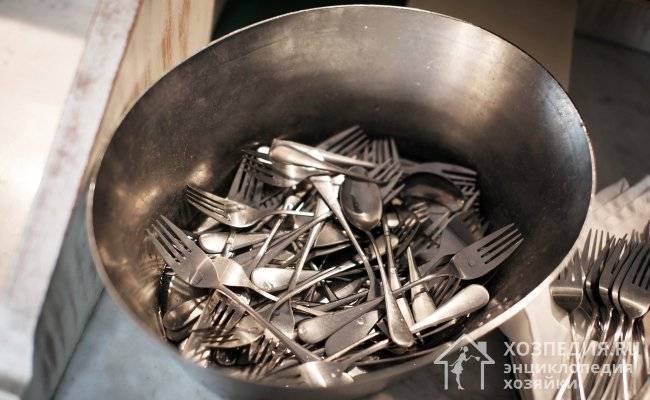 To clean stainless steel appliances, use the available home remedies. They are easy to use, affordable and completely safe.
To clean stainless steel appliances, use the available home remedies. They are easy to use, affordable and completely safe.
Mustard + soda
A mixture of mustard and baking soda is effective in combating plaque and blackness:
- Pour 1 liter of hot water into a deep bowl.
- Add 1 tbsp to the container. l. dry mustard powder and soda. Stir until the components are completely dissolved.
- Immerse the cutlery in the resulting solution for half an hour, and then scrub with a soft brush.
- Rinse items thoroughly with clean water and dry with a soft towel.
Lemon juice
Lemon juice will help remove plaque from stainless steel. Apply the product to the surface of the product and rub with a woolen cloth until all dirt, greasy or tea deposits disappear and the device regains its original shine. Then everything should be washed with clean water.
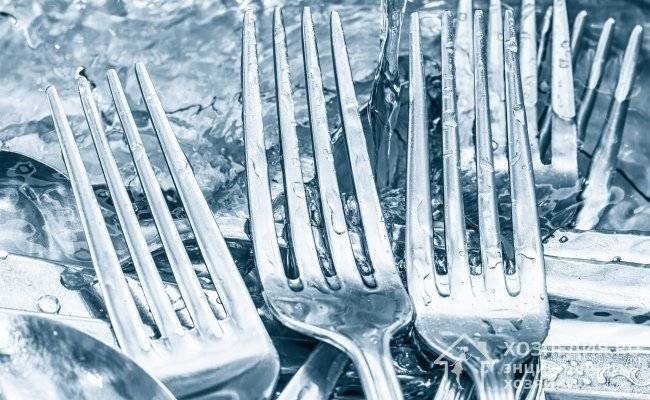 After cleaning stainless steel products, be sure to rinse them well under running water to remove any cleaning agent residue.
After cleaning stainless steel products, be sure to rinse them well under running water to remove any cleaning agent residue.
How do I clean silverware?
Silver is exactly that whimsical metal that begins to darken over time. It requires special care for itself, however, it cannot be called difficult, the main thing is to do everything in a timely manner.
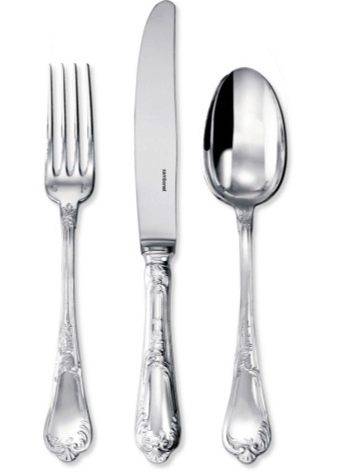

Many of the recipes and ingredients described above are also great for cleansing table silver, including:
lemon juice or citric acid. Lemon easily removes darkening and haze from silver, restoring it to its original shine. If you are using citric acid, then dilute one sachet with one liter of boiled water. Devices in this solution should be left for 15-20 minutes;
very often silverware is cleaned with ammonia
Ammonia should be diluted with water in a ratio of 1 to 10, and it is important to leave the devices in this solution for several hours, after which they should be thoroughly rinsed with water and wiped dry;
it is not uncommon for silver to be refined in the simplest way. Using a regular sponge and baking soda
Rub the surface with clean soda until all dirt and grease disappear;
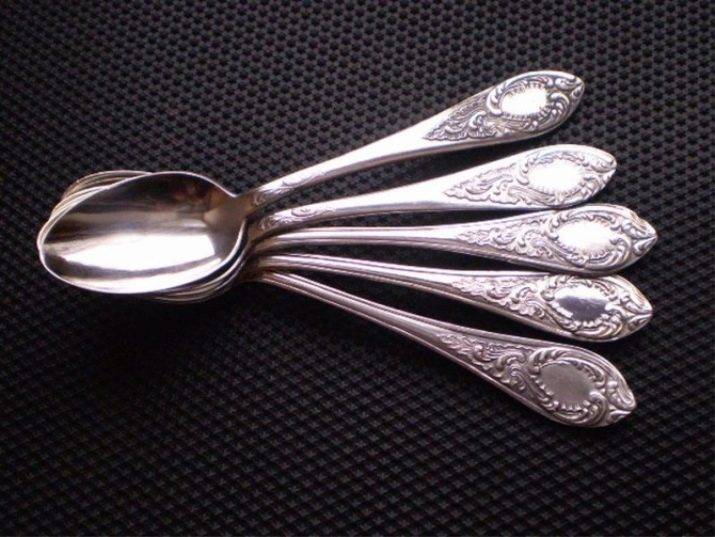
fine salt can be used to cleanse silver
It is important to mix salt with water in the same ratio of 1 to 1. Also, all appliances should be rubbed with salt with a sponge and only then dipped into an aqueous solution
After a short period of time, the devices should be rinsed under running water and dried dry;
An effective recipe for cleansing silver cutlery is the use of chalk and ammonia. This recipe is ideal if your forks and spoons have beautiful engravings and designs, as chalk and ammonia won't damage them in any way. It is important to grind the chalk as finely as possible and add alcohol to it, the resulting "porridge" should resemble kefir
Using a piece of cloth, apply this mixture to the cutlery, paying particular attention to areas with contamination, they need to be rubbed. The remains should be washed off with water.
Cleaning stainless steel appliances
Most people buy stainless steel cutlery because the metal is considered inexpensive and very practical. In addition, a wide variety of cutlery is produced from it.
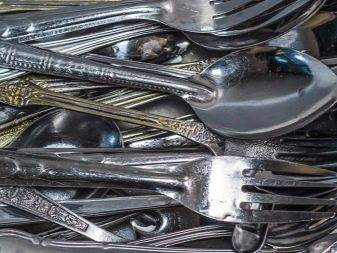

However, this does not mean at all that these devices do not need regular and correct cleaning.
Unpleasant and at the same time ugly plaque on spoons, forks and knives will appear sooner or later, even if they are regularly cleaned after eating.
Very poor water and harsh cleaning agents, as well as other external factors, can negatively affect spoons and forks.
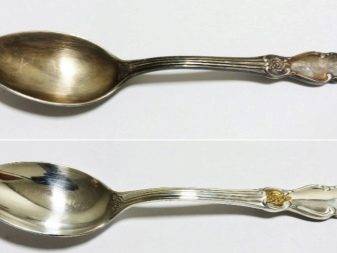
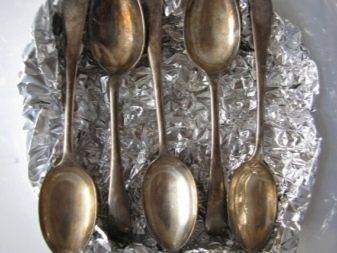
In addition, it is not uncommon for the metal to tarnish and lose its former appearance.
Today, in addition to using standard detergents, there are several other methods of cleaning tableware at home.
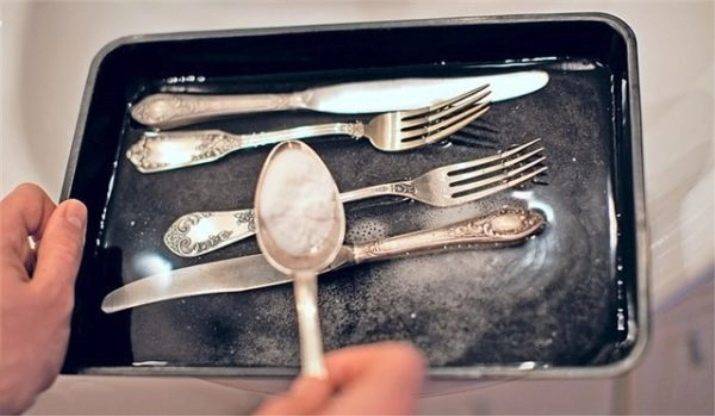
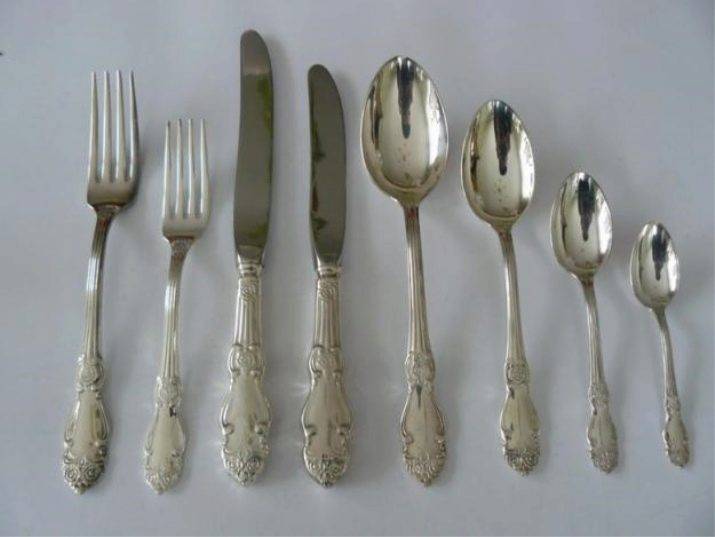
Use baking soda and salt. The combination of these components is quite easy to mix, and besides, it will not be difficult to find them in the kitchen, because they are in the arsenal of every housewife:
- to use these components, you need to choose a container that will fit all the spoons and forks for cleansing;
- put foil on the bottom of the container;

- in another container, you need to mix salt and soda one spoon at a time, and also add one liter of warm water. After thorough mixing, pour the resulting solution into a container with foil prepared in advance;
- then we put all the spoons, forks, knives and, in general, any cutlery in the prepared solution, put on the stove and boil for fifteen minutes;
- after the allotted time has passed, the devices should be taken out, washed thoroughly and wiped dry
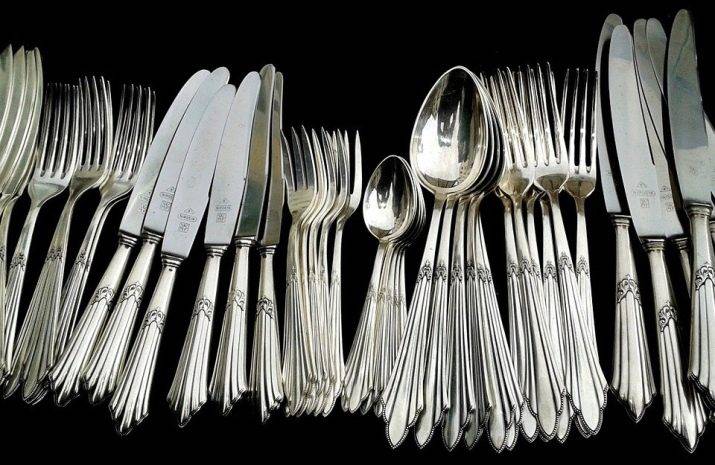
It is not uncommon for people to use toothpaste to clean stainless steel items, because thanks to the many components that are included in its composition, any spoons and forks will shine immediately after rubbing them.

To perform a high-quality cleansing, follow these instructions:
- type a container of hot water, lower the necessary cutlery into it;
- taking out one of the items, with smooth movements using a brush and a paste applied in advance, start cleansing;
- After you clean all the appliances, rinse them with warm water, wipe with a dry towel or cloth.
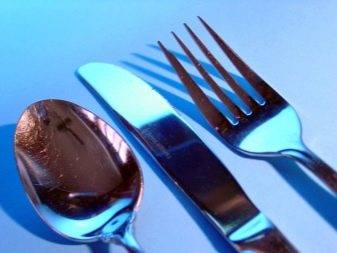
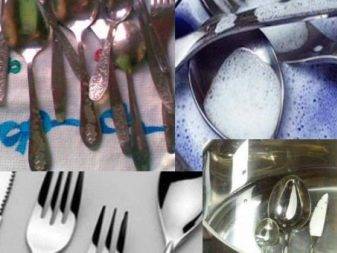
A very effective recipe is the use of plain water and soda in a ratio of 1 to 3. When preparing this recipe, you should get a thick, not too liquid mixture.
This recipe is ideal for removing yellow stains from cutlery. You can rub objects with materials that are convenient for you and even use a regular toothbrush.

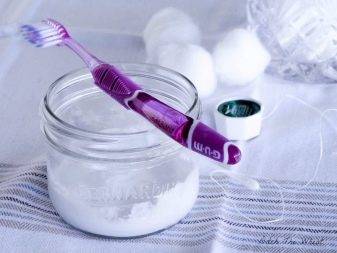
For a long time, housewives have used table vinegar to clean forks and spoons, however, when working with this recipe, it is very important not to forget to wear protective gloves:
- select a piece of unnecessary cloth and soak it in vinegar;
- thoroughly wipe your chosen cutlery with it and leave it for about half an hour, then rinse it under running water.
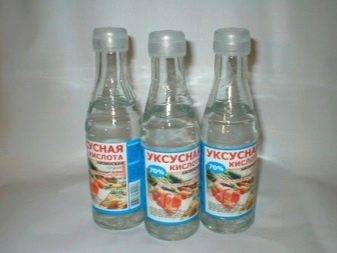

Ugly dark bloom from cutlery can be easily removed using the most common mustard. To do this, follow these steps:
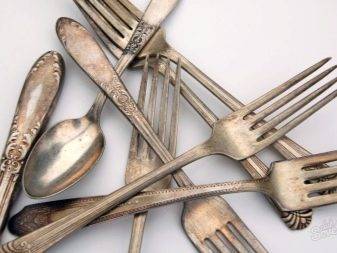

- soda and dry mustard powder must be added to a container with warm water, the components should be added in equal parts;
- after thorough mixing, put the selected cutlery in a container with the ready-made solution for no more than half an hour, the average time is up to 20 minutes;
- over time, rinse all devices under a pressure of water, and remove the remaining dirt with a sponge or brush.
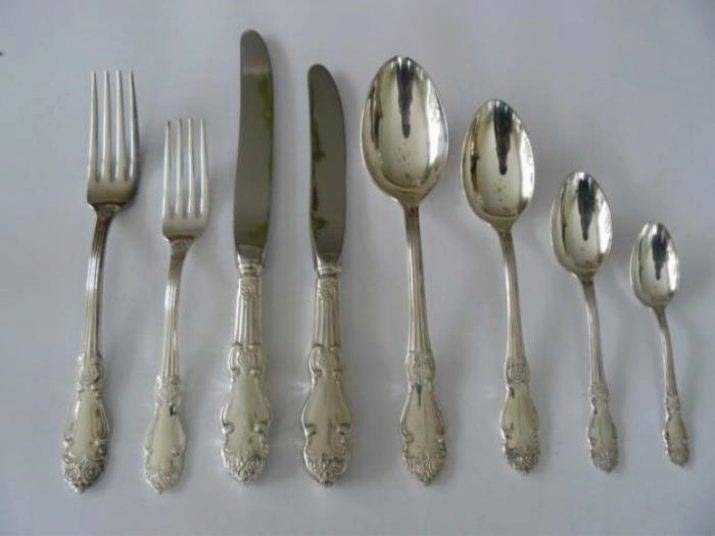
You can also clean cutlery with lemon juice. To do this, you should:
- from a whole lemon or two, squeeze all the juice into a small container;
- moisten a small piece of cloth in juice and wipe the cutlery with it;
- then you should choose another fabric, preferably a woolen flap, and rub it with a fork and spoon until a shine appears.
It is preferable to clean them regularly, so each subsequent procedure will take a minimum of time and effort from you.
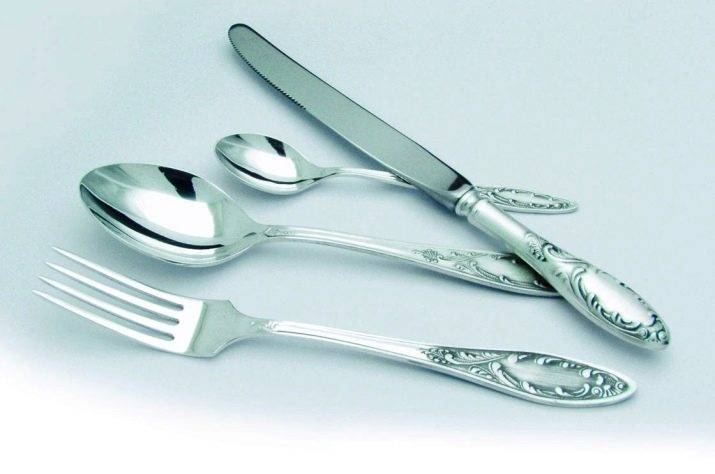
Features of cleaning different materials
Before cleaning the outside of the kettle, you need to know what is best to use, which method will not spoil the dish. It is necessary to take into account what the object is made of.
Aluminum
Aluminum surfaces are cleaned with hot water and detergent or soap. You can add a little ammonia to the cleaning solution. Aluminum is cleaned with products that do not contain aggressive alkalis. Dark bloom on the teapot is removed with a solution of vinegar in half with water. Then washed with warm water and wiped dry.

The aluminum teapot is quickly cleaned from the outside with a cabbage leaf that has been dipped in the ash beforehand. After cleaning, wipe with a piece of flannel and rinse with hot water.
Enameled
Rusty smudges from the enamel of the teapot are removed with a swab dipped in vinegar. Greasy stains are washed off with warm water and mustard powder. Grease and dirt on the outside is well removed if cleaned with a gruel of baking soda and soap. You can clean the dishes on top with fine salt applied to a damp sponge or cloth.
Glass
For cleaning teapots made of heat-resistant glass, do not use a metal washcloth, sand, or abrasives. It is better to use chemicals that wash away fat well. Greasy stains are easily removed if washed with hot water and a spoonful of dry mustard.
Stainless steel
The item will be perfectly clean if it is cleaned with a mixture made from a tablespoon of salt, flour and vinegar. Apply gruel outside. Once dry, rinse off and wipe dry. Metal surfaces are cleaned with coffee grounds taken on a wet sponge or cloth.
Electric
It is best to wipe down the appliance as often as possible so that it retains its original shine. If the kettle is made of plastic, you can scrub the outside with baking soda and water. In this case, the device is turned off. Hard-to-reach areas can be cleaned with a brush and detergent.
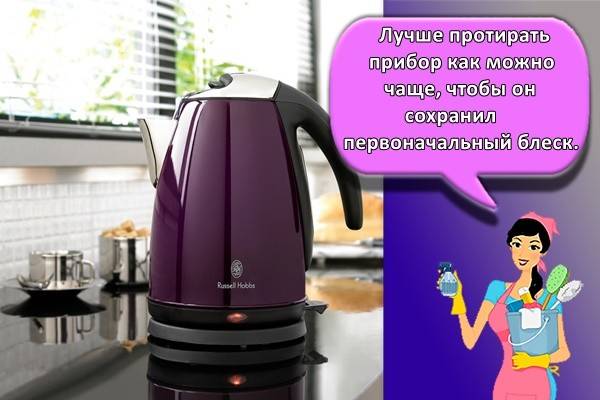
What not to do
Do not leave dishes in the sink after eating. Removing food leftovers from spoons and other items immediately reduces the rate of plaque formation. In order not to damage the metal, only mild cleaning agents are used: brushes, sponges. Rinsing, like washing to remove dirt, should be done thoroughly. Then the residues of the product will not remain on the surface. Do not use abrasive substances. The use of concentrated acid can lead to a violation of the integrity of the protective coating of the metal.
Diet clam meat is often used in cooking to prepare delicious appetizers, salads, first and second ...
Amber is the fossilized resin of coniferous crops. This mineral is fragile, sensitive to environmental influences ...
There are many good methods for cleaning your iron at home. They exist as professional, developed on ...
General recommendations for the care of stainless steel dishes
There are several basic recommendations for caring for a table set:
- Wash all appliances immediately after eating. Dry dirt and grease are difficult to clean and tend to accumulate;
- With dried food residues, you can use one trick: soak all objects in a concentrated soap solution and only then wash them with a detergent and a sponge;
- It is better not to use metal sponges for cleaning, as they leave small scratches and spoil the appearance of products;
- When cleaning from dirt with chemicals, be sure to wear rubber gloves;
- Spoons and forks, after washing with a mirror-shine detergent, can be held in water by spitting ammonia, so they will become perfectly shiny, almost like new;
- Immediately after washing, wipe the product dry with a towel or paper towel. After such a procedure, there will be no stains and white traces from the detergent;
- The cutlery is dishwasher safe. If stainless steel becomes rusty after frequent washing in the machine, it means that the metal is of very poor quality. But they can rust and become black if washed with aggressive chemicals.
 All appliances must be washed immediately after eating.
All appliances must be washed immediately after eating.
Remove plaque and scale
To dissolve the layers of scale and plaque on the walls of the thermos, household products with acidic and alkaline components are used, which are in every home.
Lemon acid
Citric acid will help remove any dirt from the walls. Pour 2 teaspoons of the product inside and pour boiling water over it. Close tightly for a day.Lemon removes plaque and musty odor. Lemon juice can be used instead of powder.
Vinegar essence
Before cleaning, a 9% vinegar solution is prepared from the essence. Fill the flask to a third of its volume, add hot water to the top. The thermos is shaken regularly. You can throw pieces of sponge into the flask, which, when shaken, will remove traces of black tea from the walls. Vinegar is used for stainless steel and glass flasks.
Sodium bicarbonate
Tea soda perfectly removes plaque from the walls of the thermos, acting first as a soft abrasive, then as an alkali. 2-3 tablespoons are poured into a flask, filled with water (50-60 °). Having closed the thermos, they actively shake so that the powder particles clean off the layer of dirt from the walls. Then it is left for several hours.

baking powder
You can clean the walls with baking powder, which is a mixture of basic and acidic salts. Depending on the volume of the thermos, put 2-4 tablespoons of the mixture, fill it with warm water.
Rice and pearl barley
Pour ½ cup of cereal into a thermos and pour boiling water to the top. Having closed the flask, they actively shake so that the cereal cleans the walls. You need to shake the vessel regularly, rice or pearl barley play the role of an abrasive. To enhance the effect, you can add a spoonful of tea soda. Cleaning time - 2-3 hours.
Carbonated drinks
Traditional methods suggest washing a contaminated flask with soda in the following ways:
- with insignificant pollution - pour in a warm drink for several hours;
- strong plaque - the soda is heated to a boil and kept in a flask for 10-12 hours.
According to the experience of housewives, the undisputed leader in efficiency is Coca-Cola.
Ammonia solution
The ammonia quickly dissolves plaque, but it is better to wash it only the outer part of the thermos. The ammonia solution corrodes the protective layer of the flask and deteriorates the thermal insulation properties.

"White"
Bleach in "Whiteness" is dangerous for humans, it is worth using this method in case of extreme pollution. The cap of the product is poured into the flask, and hot water is added to the top. An hour is enough to dissolve the plaque. Then a long, thorough rinsing with plenty of water.
Denture tablets
This product is safe for humans and will not ruin the flask. Several tablets are turned into powder, poured inside and poured with hot water for 2-3 hours. To enhance the impact, they periodically shake.
Funds from the store
Household chemicals can be used to clean the thermos.
"AntiNakipin"

Convenient product for descaling surfaces.
Advantages and disadvantages
inexpensive;
without smell;
as part of a substance with anticorrosive and disinfectant action.
will have to specially buy;
reapplication may be required to remove dark plaque.
"Antinakipin" is placed in a flask and poured with boiling water for an hour.
I like it, I do not like it
"Silit"
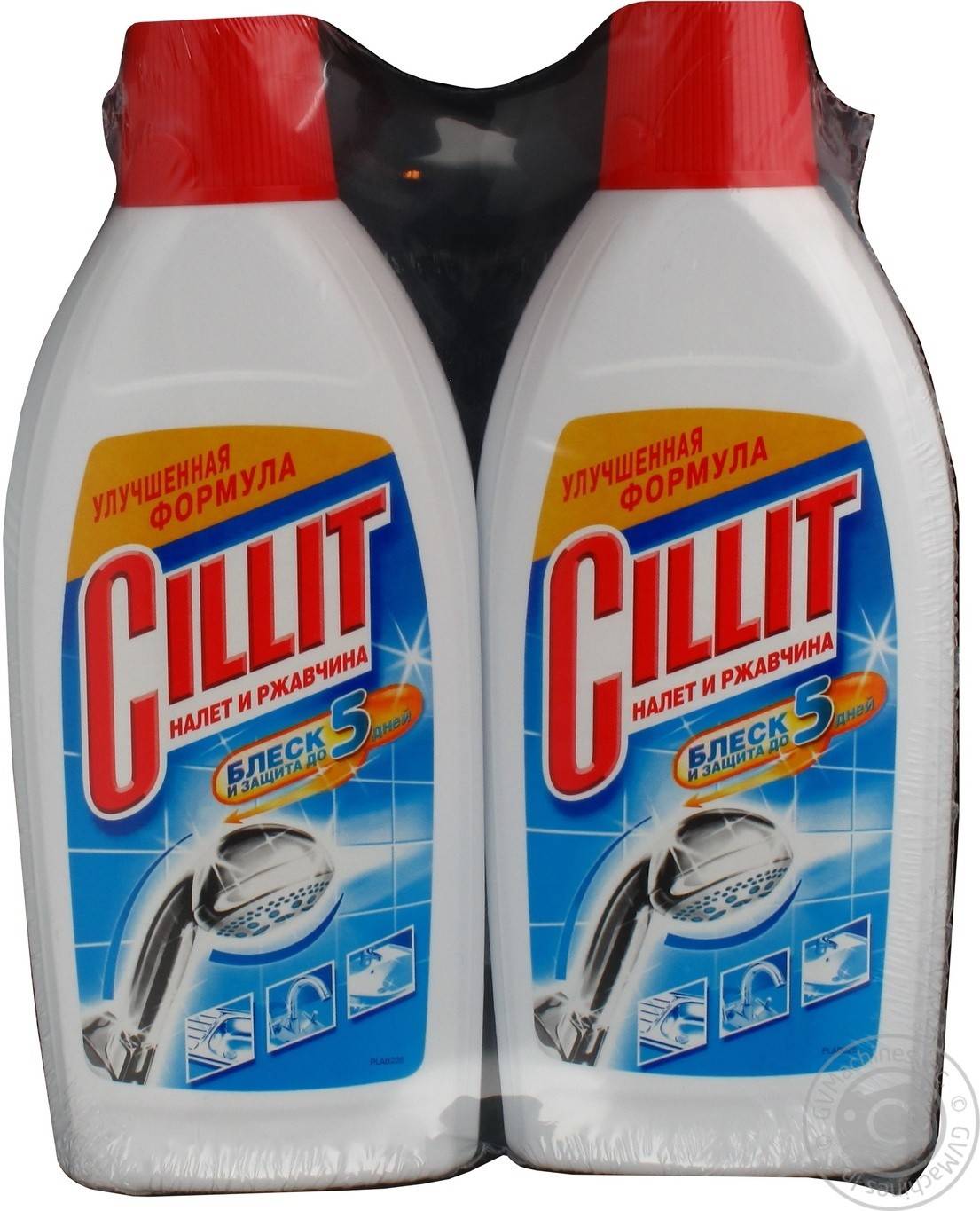
In the line of preparations "Silit" there is a remedy for plaque and scale.
Advantages and disadvantages
cleans quickly and efficiently;
safe for dishes and humans.
difficult to calculate the portion.
The drug is poured into hot water in a thermos and left for 1-2 hours.
I like it, I do not like it
Baking powder
Depending on the capacity of the thermos, add 1-3 tablespoons of baking powder, pour in water, stand for 2-3 hours. Repeat cleaning if necessary.
Salt consumption - 4 tablespoons per ½ liter of water. Salt is poured into a flask, poured with boiling water, shaken and left for 3 hours.



